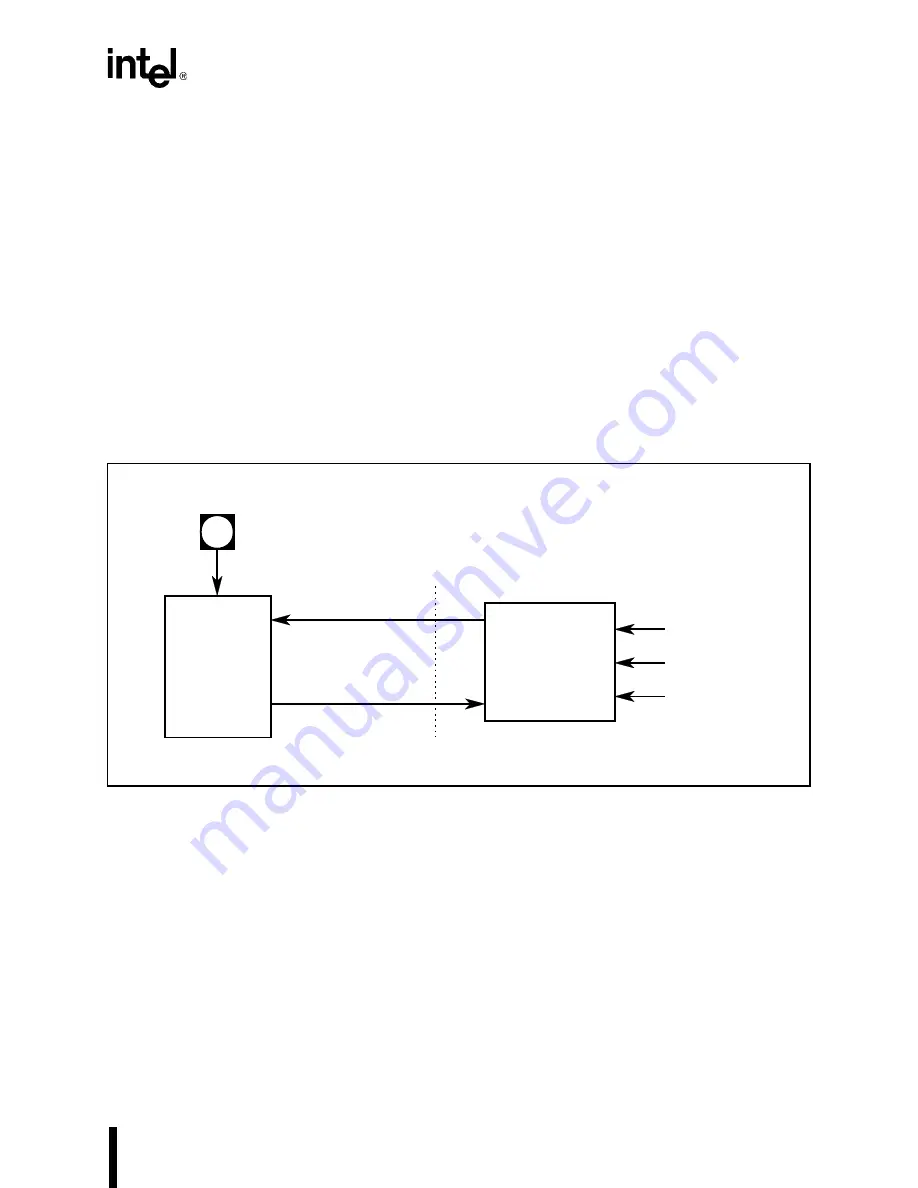
2-39
OVERVIEW OF THE 80C186 FAMILY ARCHITECTURE
2.3 INTERRUPTS AND EXCEPTION HANDLING
Interrupts and exceptions alter program execution in response to an external event or an error
condition. An interrupt handles asynchronous external events, for example an NMI. Exceptions
result directly from the execution of an instruction, usually an instruction fault. The user can
cause a software interrupt by executing an “INTn” instruction. The CPU processes software in-
terrupts in the same way that it handles exceptions.
The 80C186 Modular Core responds to interrupts and exceptions in the same way for all devices
within the 80C186 Modular Core family. However, devices within the family may have different
Interrupt Control Units. The Interrupt Control Unit handles all external interrupt sources and pre-
sents them to the 80C186 Modular Core via one maskable interrupt request (see Figure 2-24).
This discussion covers only those areas of interrupts and exceptions that are common to the
80C186 Modular Core family. The Interrupt Control Unit is proliferation-dependent; see Chapter
8, “Interrupt Control Unit,” for additional information.
Figure 2-24. Interrupt Control Unit
2.3.1 Interrupt/Exception Processing
The 80C186 Modular Core can service up to 256 different interrupts and exceptions. A 256-entry
Interrupt Vector Table (Figure 2-25) contains the pointers to interrupt service routines. Each en-
try consists of four bytes, which contain the Code Segment (CS) and Instruction Pointer (IP) of
the first instruction in the interrupt service routine. Each interrupt or exception is given a type
number, 0 through 255, corresponding to its position in the Interrupt Vector Table. Note that in-
terrupt types 0–31 are reserved for Intel and should not be used by an application program.
Interrupt
Control
Unit
Maskable
Interrupt
Request
Interrupt
Acknowledge
External
Interrupt
Sources
CPU
NMI
A1028-0A
Summary of Contents for 80C186EA
Page 1: ...80C186EA 80C188EA Microprocessor User s Manual...
Page 2: ...80C186EA 80C188EA Microprocessor User s Manual 1995...
Page 19: ......
Page 20: ...1 Introduction...
Page 21: ......
Page 28: ...2 Overview of the 80C186 Family Architecture...
Page 29: ......
Page 79: ......
Page 80: ...3 Bus Interface Unit...
Page 81: ......
Page 129: ......
Page 130: ...4 Peripheral Control Block...
Page 131: ......
Page 139: ......
Page 140: ...5 ClockGenerationand Power Management...
Page 141: ......
Page 165: ......
Page 166: ...6 Chip Select Unit...
Page 167: ......
Page 190: ...7 Refresh Control Unit...
Page 191: ......
Page 205: ......
Page 206: ...8 Interrupt Control Unit...
Page 207: ......
Page 239: ...INTERRUPT CONTROL UNIT 8 32...
Page 240: ...9 Timer Counter Unit...
Page 241: ......
Page 265: ......
Page 266: ...10 Direct Memory Access Unit...
Page 267: ......
Page 295: ...DIRECT MEMORY ACCESS UNIT 10 28...
Page 296: ...11 Math Coprocessing...
Page 297: ......
Page 314: ...12 ONCE Mode...
Page 315: ......
Page 318: ...A 80C186 Instruction Set Additions and Extensions...
Page 319: ......
Page 330: ...B Input Synchronization...
Page 331: ......
Page 334: ...C Instruction Set Descriptions...
Page 335: ......
Page 383: ...INSTRUCTION SET DESCRIPTIONS C 48...
Page 384: ...D Instruction Set Opcodes and Clock Cycles...
Page 385: ......
Page 408: ...Index...
Page 409: ......
















































